Written by All West Beef Large Herd Specialist, Clint Sexson
Howdy All West Family!
First, we would like to congratulate many of our valued customers on their great success during the bull sale season and early spring calving reports. Your trust in Select Sires genetics and the recommendations of our team creates a partnership that we truly value. As we look the year in the face with new challenges and opportunities, we are encouraged by the market outlook and the many connections we have to connect customers and potential buyers.
Considering the weather cycle and current cow numbers across the country, the potential to market uniformity of age, size, and genetics into a buyer’s hands pays rewards in terms of health, performance, and marketing position. We encourage you to front-load the early part of your calving cycle. The methods to accomplish this may take on many approaches and may be tailored to the landscape of your operation.
We would like to highlight some very good options you may consider and certainly encourage you to visit with any of our All West Beef Sales Representatives about these methods in depth.
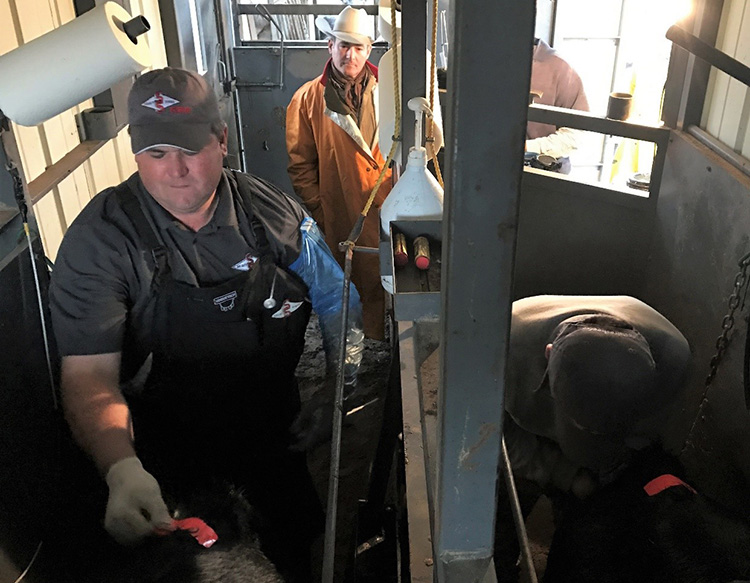
METHOD #1
The first method has been a staple for many years in the industry: A single shot of Prostandlin. This approach includes several days of heat detection or the bulls you have on hand. Below is an example of how this process would potentially work on your ranch:
TUESDAY
You would start heat detecting morning and evening and artificially insemination evening and morning according to the 12-hour rule or you can introduce bulls to the cows/heifers and put them to work.
SATRUDAY MORNING
You would gather the group, administer Prostandlin to all cows/heifers and add a heat detection aid, such as Estrotect Heat Detection Patches. At this point, you continue morning and evening heat detection for 96 hours and then breed or leave the bull battery with the group until about 48 hours.
MONDAY MORNING
If the bulls are in the equation, pull them out at 48 hours and heat detect and artificially inseminate for 48 hours. The bulls return to the group following the A.I. work.
Key Elements of this system include:
- If cows/heifers are cycling prior to the start, about 40 to 60 percent of females will respond.
- The cost of drugs is low, but labor for heat detection can vary with the number of hours of heat detection involved. Low cost, low risk system, but also low synchrony.
- Animals must be cycling (CL present) and between day 5 – 17 after estrus to respond to each PG injection.
- Interval from PG to estrus variable, but most animals will exhibit estrus 36 – 96 hours after PG injection.
- Low estrus detection rates and the proportion of females cycling often limit pregnancy rates.
- This program will not work if animal is anestrous or prepubertal.
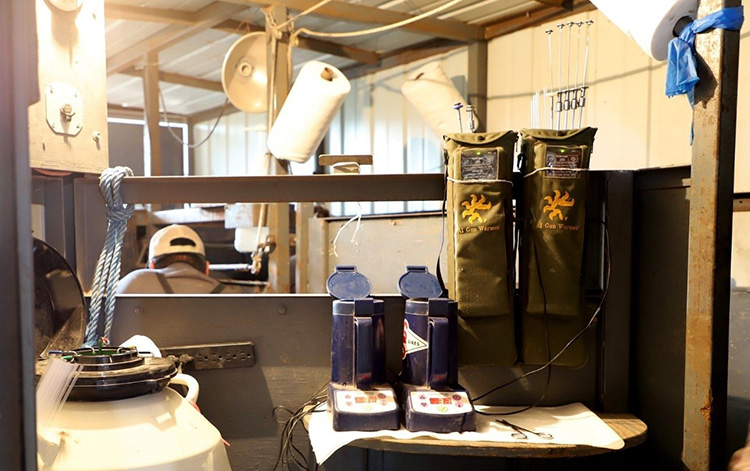
METHOD #2
The second method is a good option to use your bull battery and artificial insemination together. In the back of the Select Sires Beef Sire Directory, we are looking at a Select Synch Too. The logistics are as follows:
MONDAY
Gather group. Administer a Gnrh shot and expose bulls to the group.
THE FOLLOWING MONDAY
Gather group. Administer Prostandlin and heat detection aids and leave bulls on board.
WEDNESDAY
Gather group. Breed activated heat detection patches and remove bulls.
THURSDAY
Gather group. Breed remaining cows with Gnrh to those with no detected heat.
FRIDAY
Return bulls to group.
Key Elements of this system include:
- This is a great long-term protocol. If repeated year after year, more cows continue to calve early.
- If cows are actively cycling prior to starting, your response should be 60 percent detected plus up to 15 percent cycling prior to A.I.
- Estrus generally begins the 1-2 days before PG injection; however, peak estrus is 36-72 hours after PG.
- Excellent estrus detection aids are critical for success.
- Even in 100% cyclic cows, now all will respond to PG.
- Anestrous cows are not always active with this protocol and success is determined by cows detected in heat.
- The drug costs increase and labor requirements include four gathers to the corral.
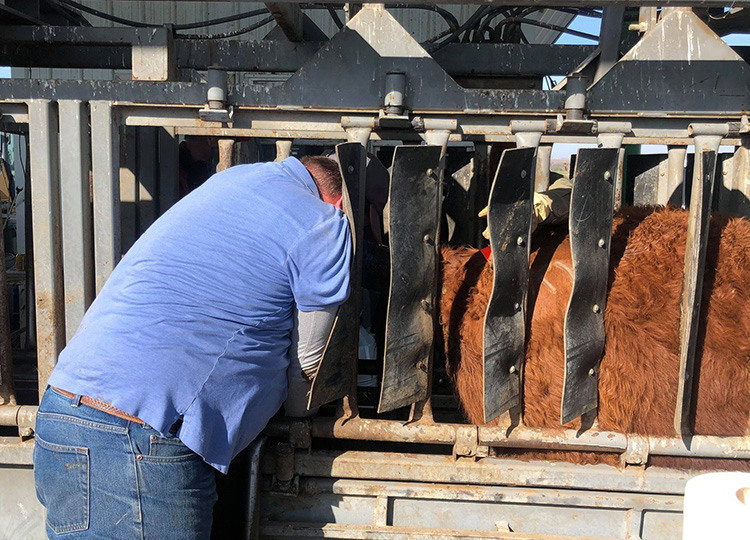
METHOD #3
The third method is synchronization and artificial insemination with CIDRs. This is the most expensive approach in terms of cost, but arguably the most beneficial to front-load the calving season.
MONDAY
Gather group. Administer a Gnrh shot and CIDR implant.
THE FOLLOWING MONDAY – LATE AFTERNOON
Gather group. Remove CIDR. Administer Prostandlin and heat detection aids.
THURSDAY MORNING
Gather group and A.I. Follow up with bulls where they add value to your goals.
Key Elements of this system include:
- This is the most popular system available to synchronize cows. We find confidence in the system when we detect 60 to 70 percent of the cows cycling at time of A.I.
- This is the cow assist program. It helps front load the system effectively.
- Fixed time A.I. can be done at 60 to 66 hours post PG injection.
- All females require a GnRH injection at fixed-time A.I.
- This system can initiate estrous cycles in some noncycling females.
- Expect lower fertility in cows less than 50 days postpartum at time of PG injection.
- It is a system with no heat detection required.
- It is the most expensive to implement in terms of drug cost.
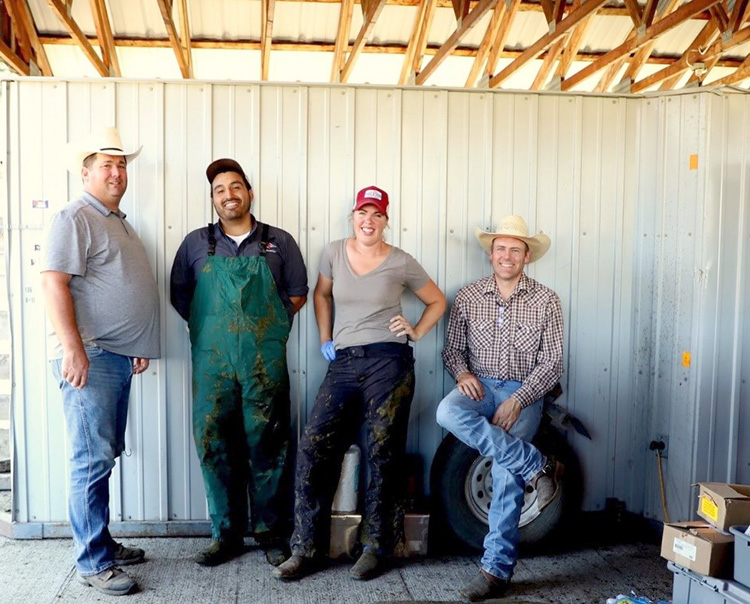
We are here to actively help with the front-loading process as it pertains to synchronization and artificial insemination, connect you to marketing supply chains, and of course help you make the best genetic decisions for your herd. We offer whole herd programs providing labor and facilities to implement protocols and breeding day wants and needs, connection with calf marketing opportunities and a sire lineup respected by many in the industry. Whether you are looking for maternal, market bound, or balance trait sires, we have bulls available for you! We look forward to visiting soon about offering the best for the success of your program.
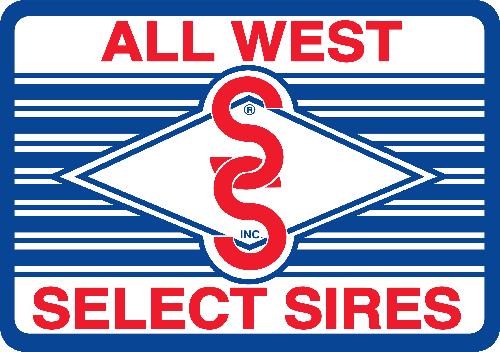
 .
. .
. .
. .
. .
. .
.